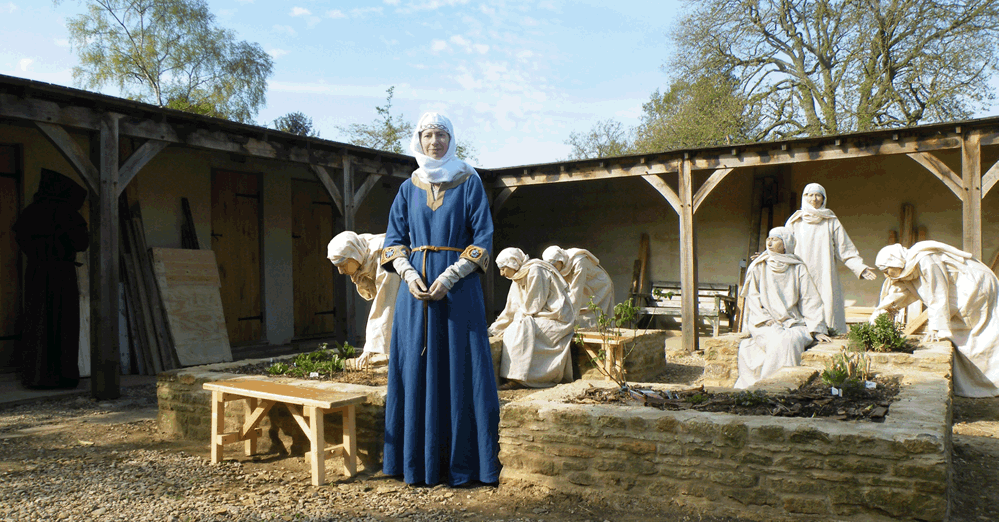
Rumwoldstow is a historic reenactment / living history project based around a fictional Anglo-Saxon monastery dedicated to our local saint Rumwold. At the project’s heart are a cloister, garden and orchard located near Banbury which represent an early tenth century monastery in miniature. We’re setting up a local reenactment group for crafts, living history and roleplaying. If you live nearby and are interested in getting involved, please contact us by email:
info (at) rumwoldstow.org
In our story, Rumwoldstow was refounded in 916 AD on the site of an earlier minster that was sacked by Vikings, perhaps in 914 AD. We are tracking the tenth century against modern years, so 2016 AD corresponds to 916 AD in the story of Rumwoldstow. We plan to build up resources to describe Rumwoldstow and its history, such as a founding charter and monastic rule.
In our story, Rumwoldstow is a monastery of women. The Anglo-Saxons used the word ‘monastery’ or ‘minster’ for for establishments of both men and women; they did not use the word ‘nunnery’. Please note that we welcome people of any gender – there are priests, craftspeople and lay folk as well as nuns at Rumwoldstow. If you’re more interested in the Vikings than Anglo-Saxons, that’s fine too; there was a strong Viking presence in Mercia at this time and it’s very much part of our story.
Latest posts from Rumwoldstow
- Meadowsweet mead
It is late July and the meadowsweet is in full flower. Many years ago, I made meadowsweet wine and it was good, so now I’m having a go at a mead. I read that:
…the name is in fact a corruption of the old medieval name “meadesweet”, stemming from the days when the plant was added during the brewing of mead, as a flavouring agent.
https://pharmaceutical-journal.com/article/opinion/the-anti-inflamatory-properties-of-meadowsweet
Various parts of the plant have been used medicinally for centuries, primarily for the relief of pain and fever, but other uses have included the treatment of gastrointestinal complaints, including peptic ulceration, and the treatment of diarrhoea. Its anti-inflammatory effects can be accounted for by the fact that all parts of the plant contain several salicylate compounds, including salicylic acid itself. In 1897, when Felix Hoffmann produced acetylsalicylic acid, he used salicin produced from meadowsweet plants. This led to the development of the brand name Aspirin, which was derived from the botanical name at the time for meadowsweet, Spiraea ulmaria.One may hope therefore that this mead will be its own hangover cure.
However from the same source I note:
Because of the high levels of salicylates, preparations containing meadowsweet extracts are contraindicated in patients taking warfarin, and also in those already taking non-steroidal anti-inflammatory drugs. Extracts of the plant have been to cause bronchospasm, therefore caution is advised in its use by asthma sufferers.
…which is kind of important information…oh hear this, ye “it’s natural so of course it’s safe” brigade…
I foolishly gave away my copy of C J J Berry’s indispensable “First Steps in Winemaking” so I am not working to an exact recipe. I gathered a small basket of open flowers, and have boiled 5 litres of water which is now cooling.
My next job is to empty 6 jars of local set honey (340 g each, for a total of 2.04 kg) into the pan, and when it’s tepid, add the meadowsweet and yeast. I’ll be using Mangrove Jack’s Mead Yeast, same as I used for the apple and medlar mead that I started back in January of this year (2024 / 924). Yes, for a truly authentic brew I would rely on natural yeasts, but I haven’t the confidence.
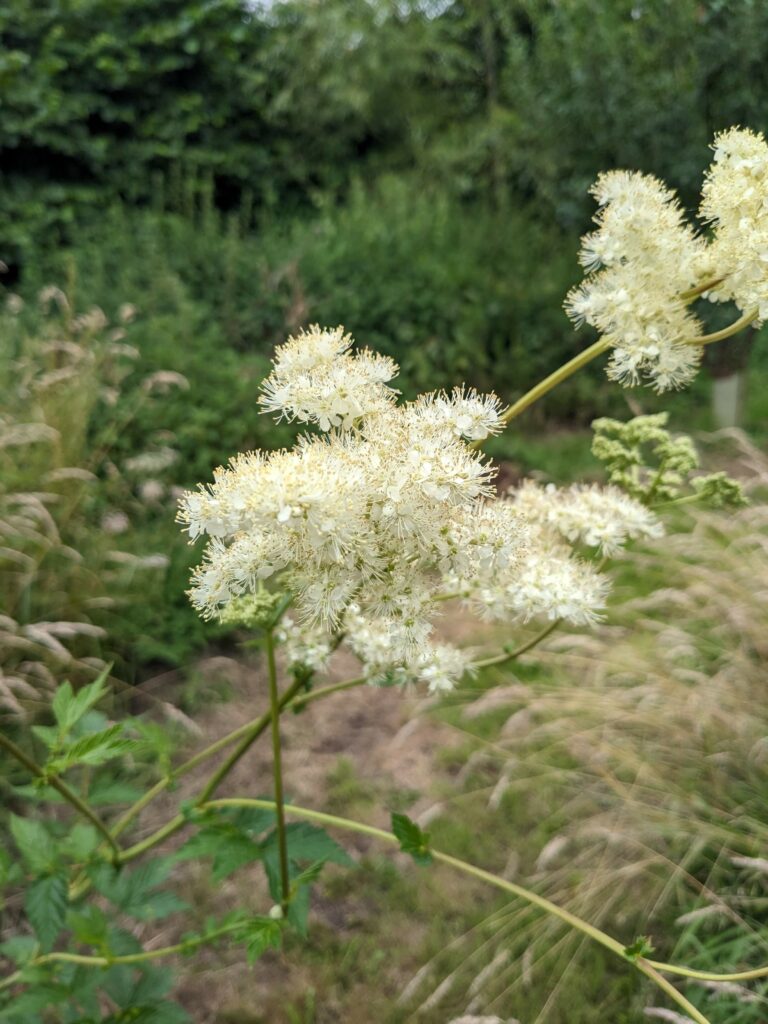
Meadowsweet close up 
Meadowsweet in the orchard 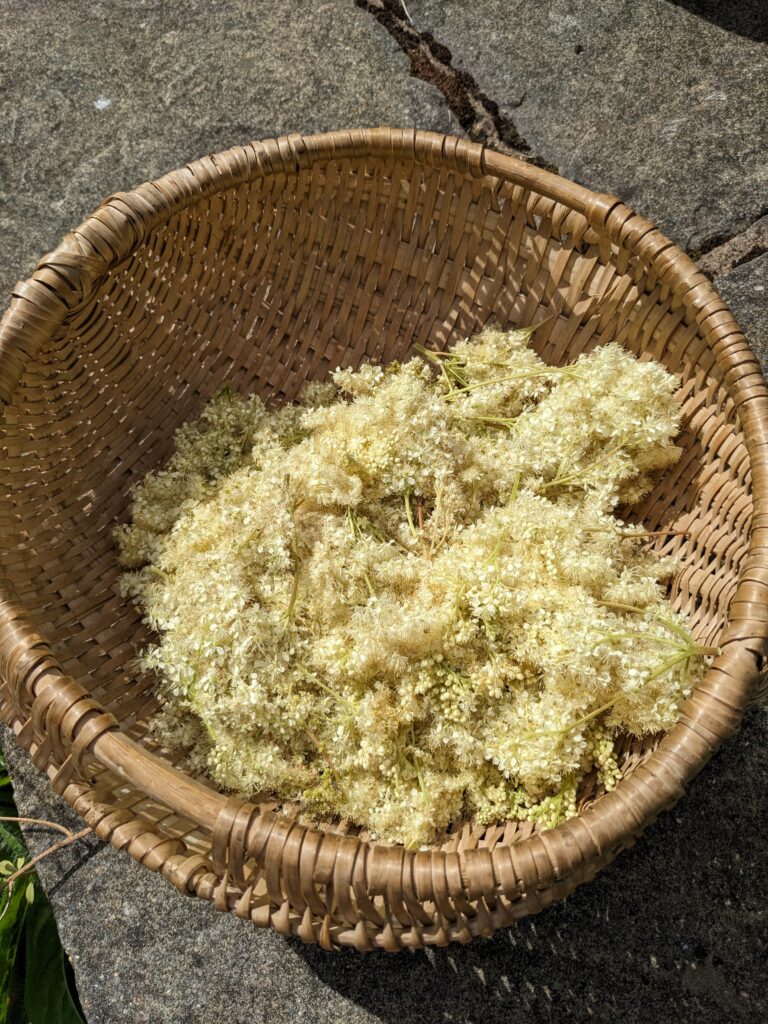
Meadowsweet in the basket - Dinner from the new oven
Having briefly tested Al’s amazing new wood-fired bread oven, we tried it out more thoroughly a few days later.
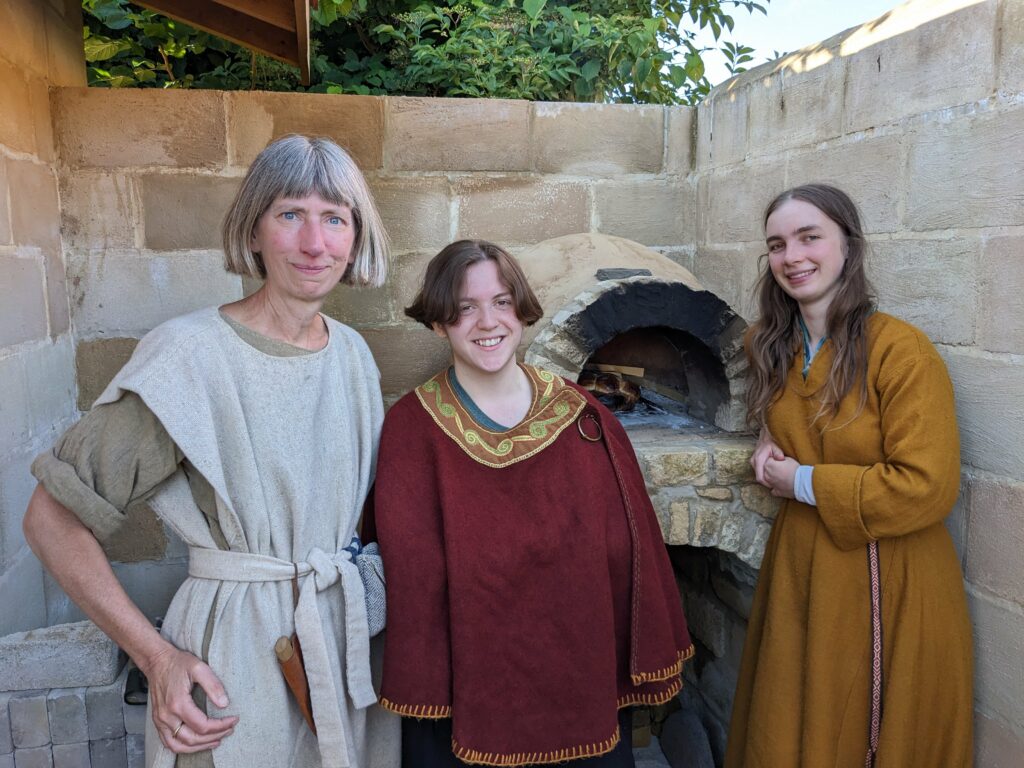
The oven in use! With the ambitious plaited loaf just visible 
Rack of lamb and sausages cooking in a cast iron skillet. Fast and good. 
The master baker with an ambitious sweet plaited loaf ready to go in 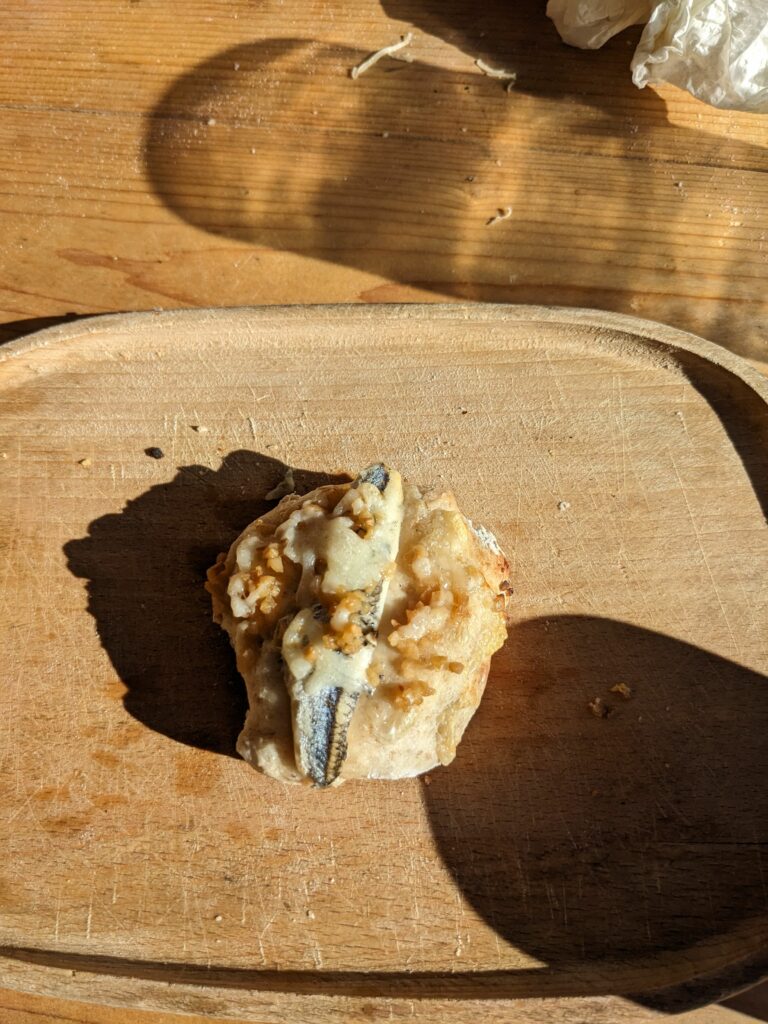
My baking skills extended as far as the single-anchovy mini pizza with chopped garlic, leek and cheese. 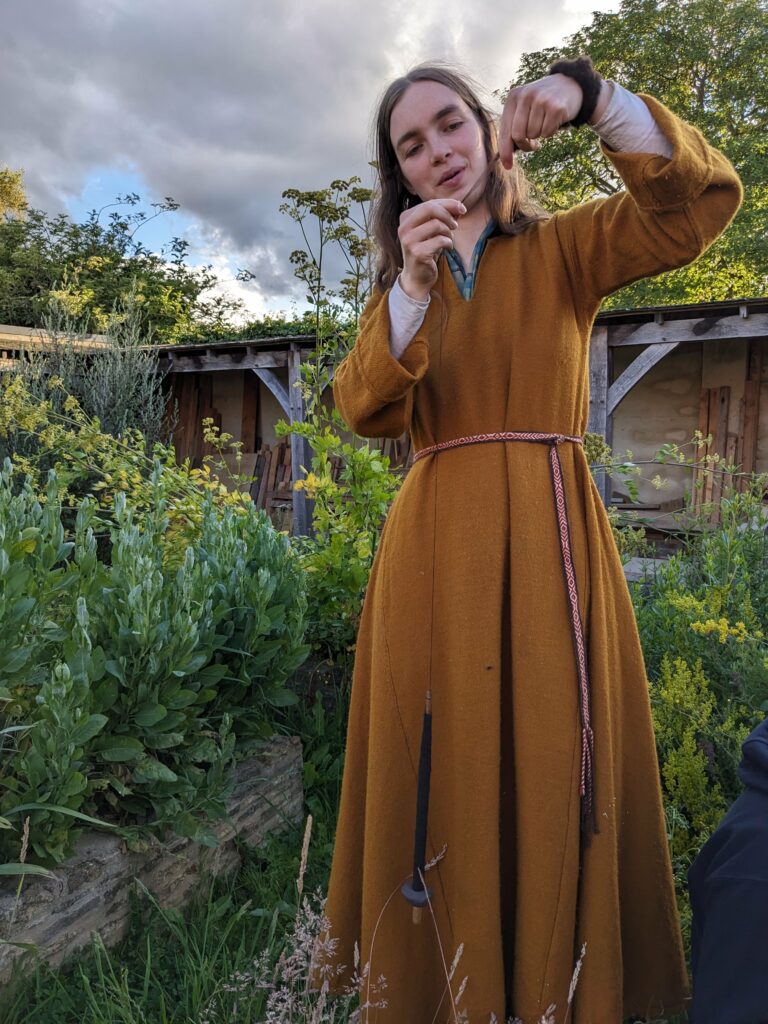
Aelfrun spinning 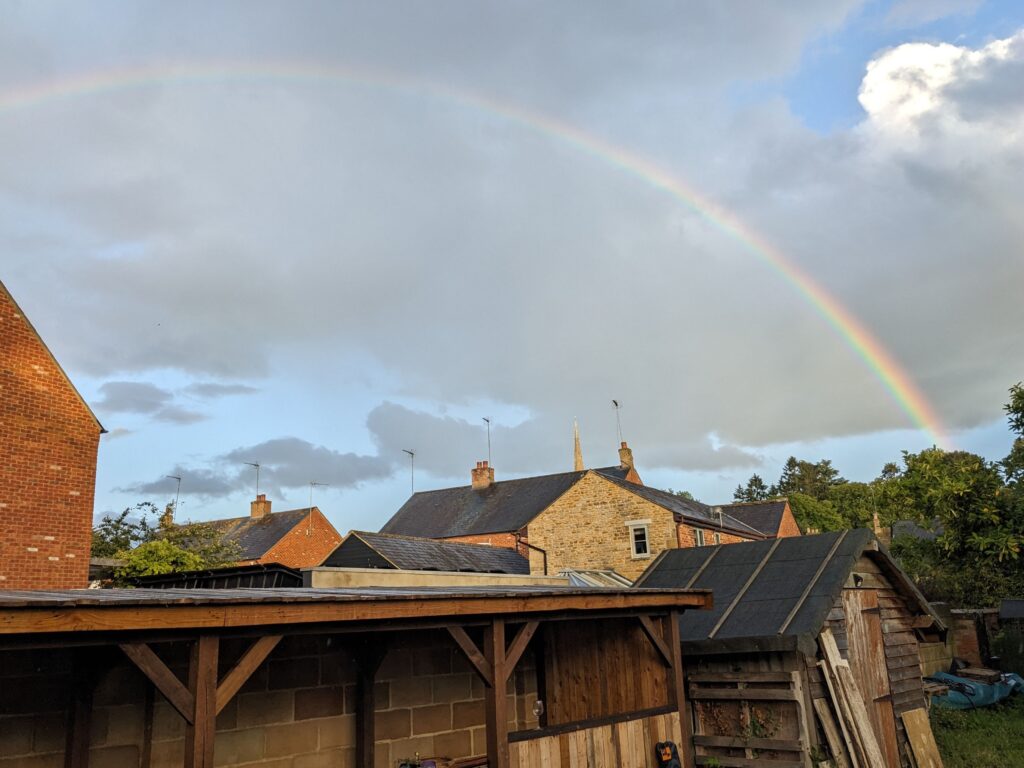
Our final reward – a complete rainbow - First Firing
Al has built the Roman-style bread oven! Or as you might describe it, a budget pizza oven off the internet, mahoosively gussied up with fancy stonework, extra insulation and render. It had its first firing on the 4th July, basically to dry it out and see how well a fire would burn and heat it. Just so we cooked *something*, I mixed up some scone dough and stirred in a handful of dried raisins.
Modern scones are quite inauthentic as baking powder was Not A Thing in the early medieval days. Breads would be unleavened, or raised with yeast. And they were a bit burned in places, and slightly underdone in others. But fresh out of the oven with some medlar jam, they were delicious.

The oven with its first firing! 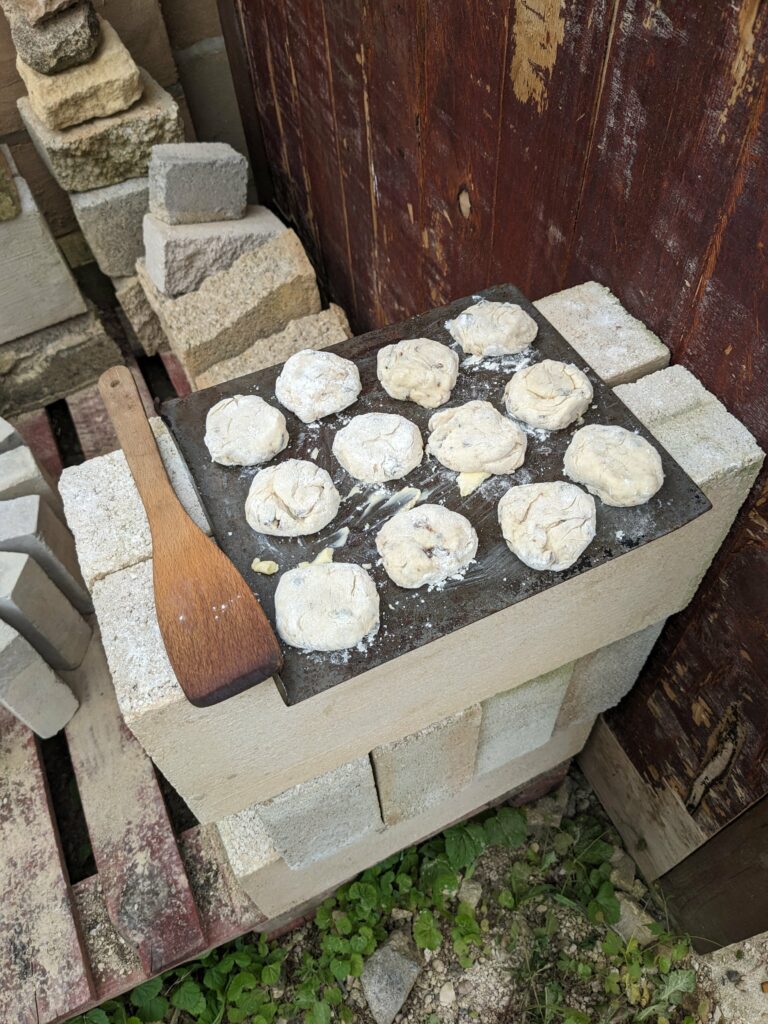
Scones ready to go in 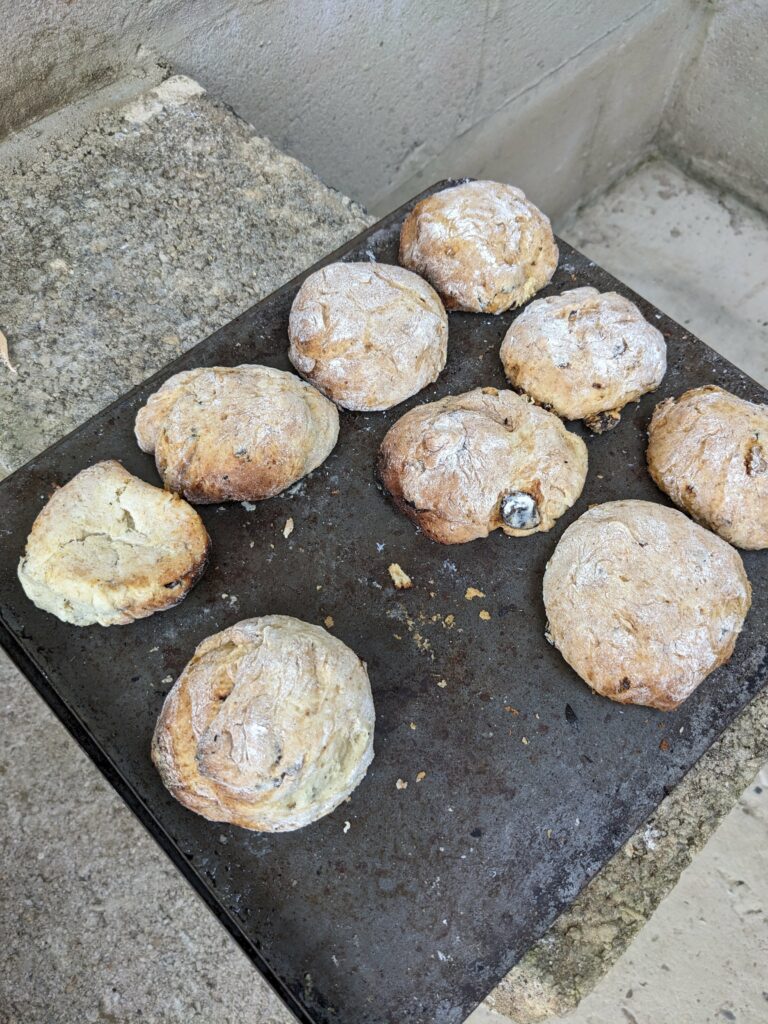
Scones fresh from the oven 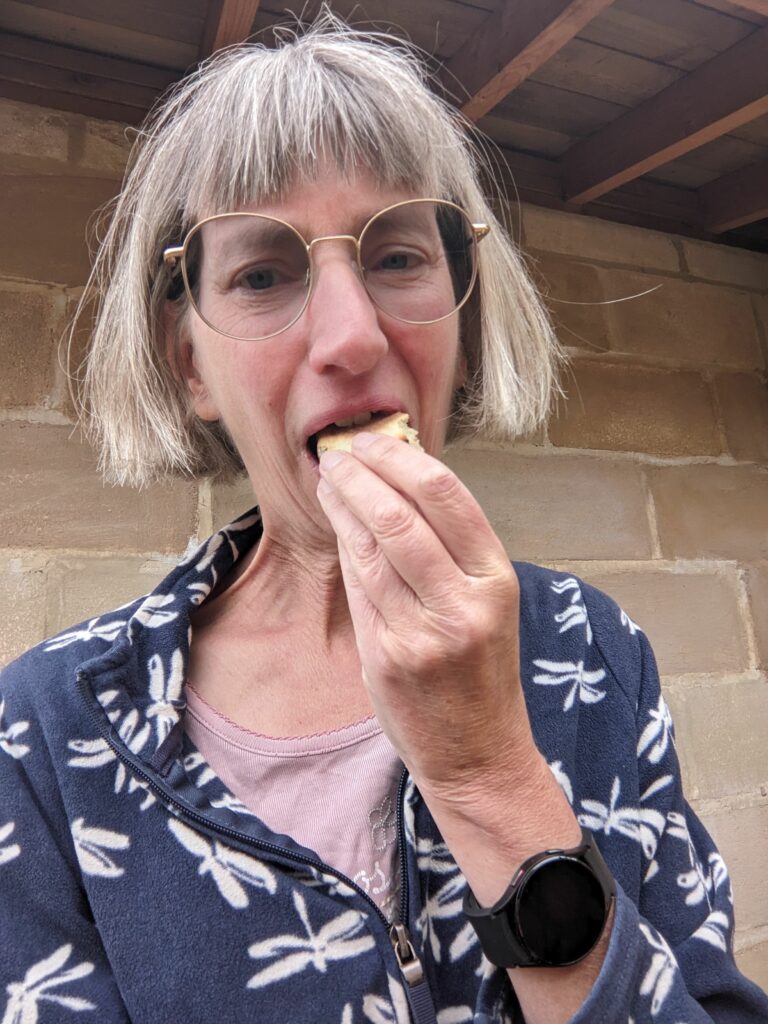
Scone? S’gone. - Five flowers
The blossom on the first seedling to produce flowers has opened. Some sixty-ish seedlings are NOT flowering, and vary between Nothing and Lots Of Leaves. But this Gala pippin is giving it a good go. Here’s a photo from a couple of days ago.
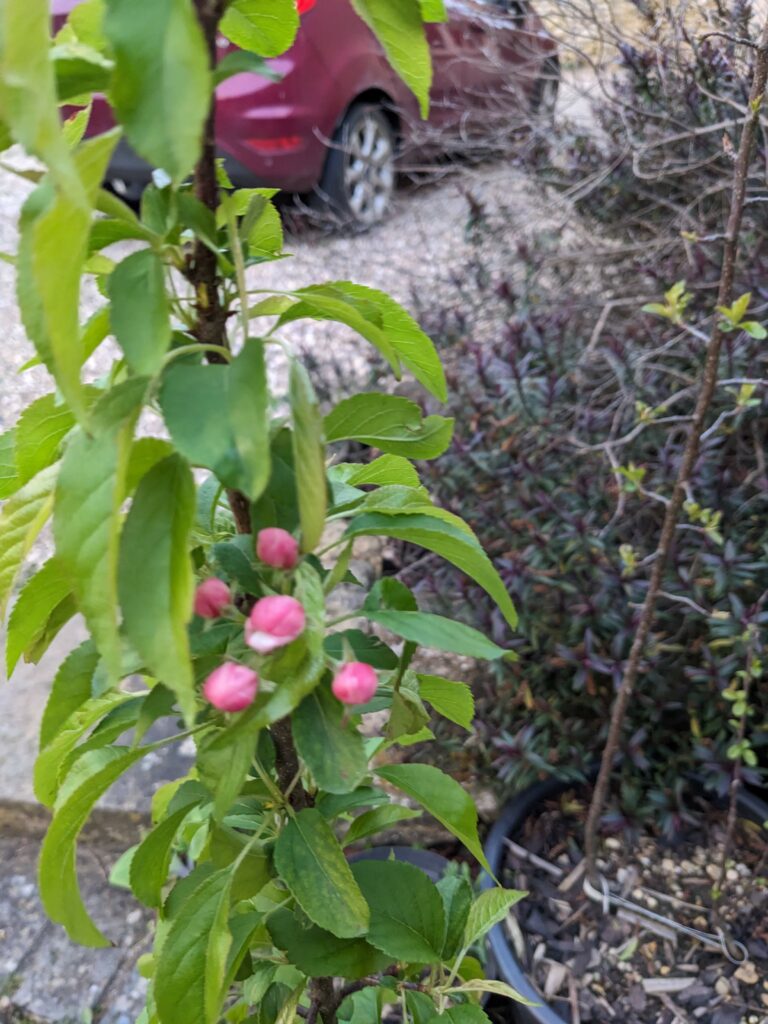
Gala pippin’s first blossoms, Tuesday 9th April 2024 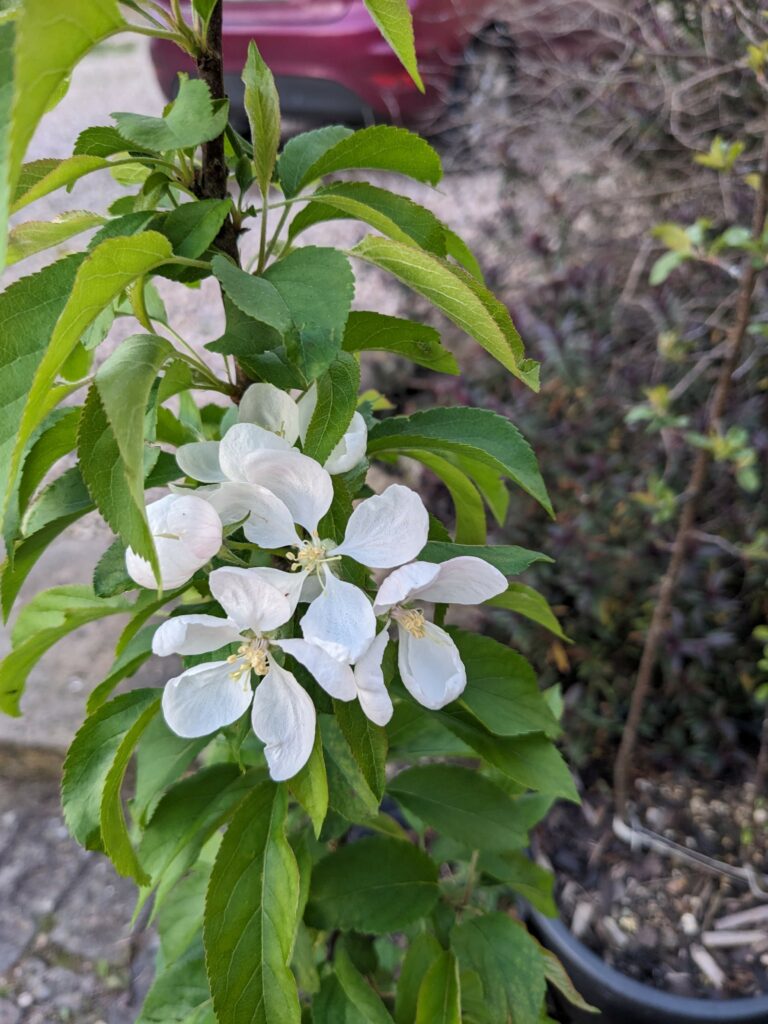
The same blossoms, Sunday 14th April 2024 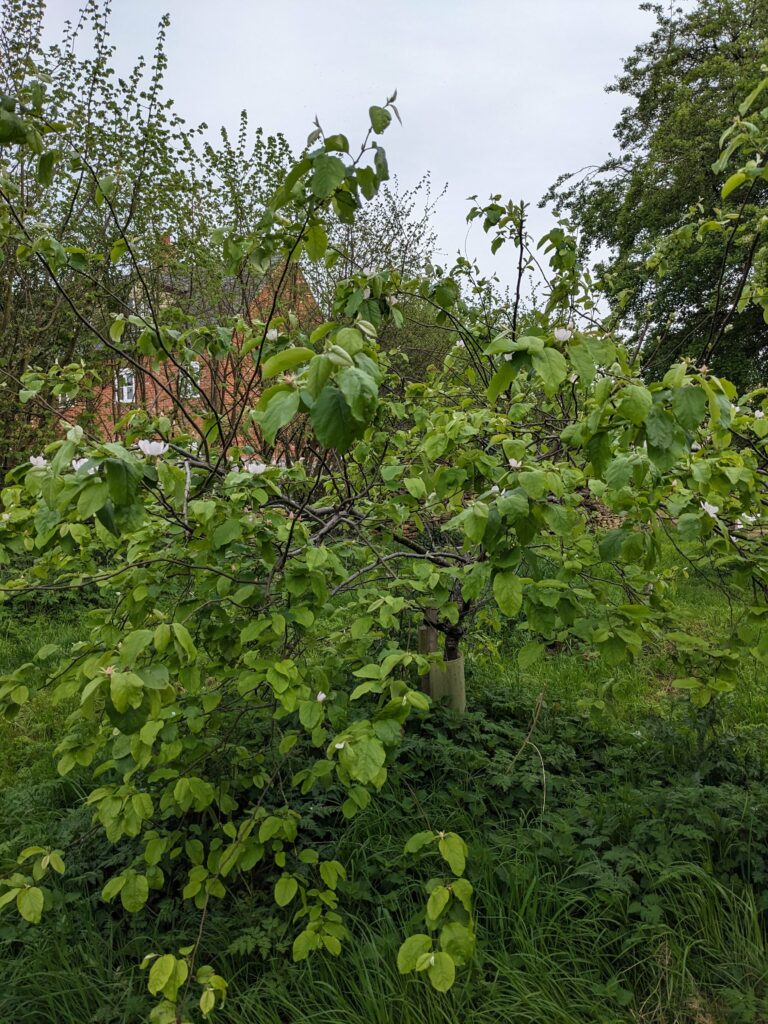
The quince tree is starting to flower (mainly on the west side) 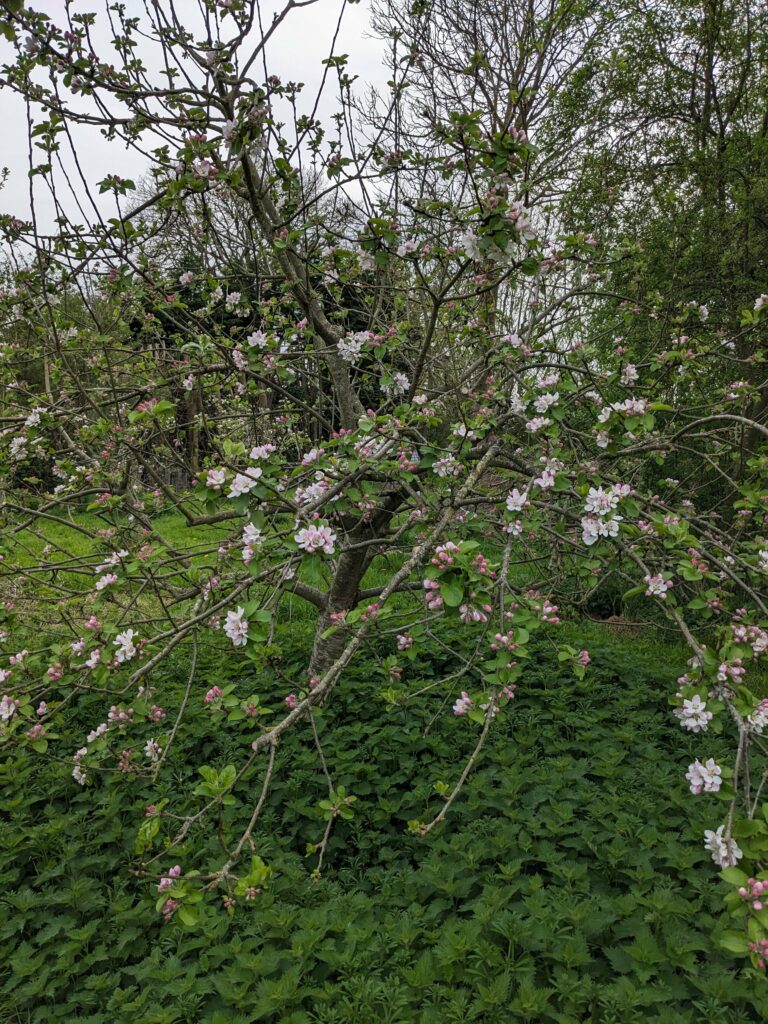
The established apple tree (variety unknown) is also in bloom 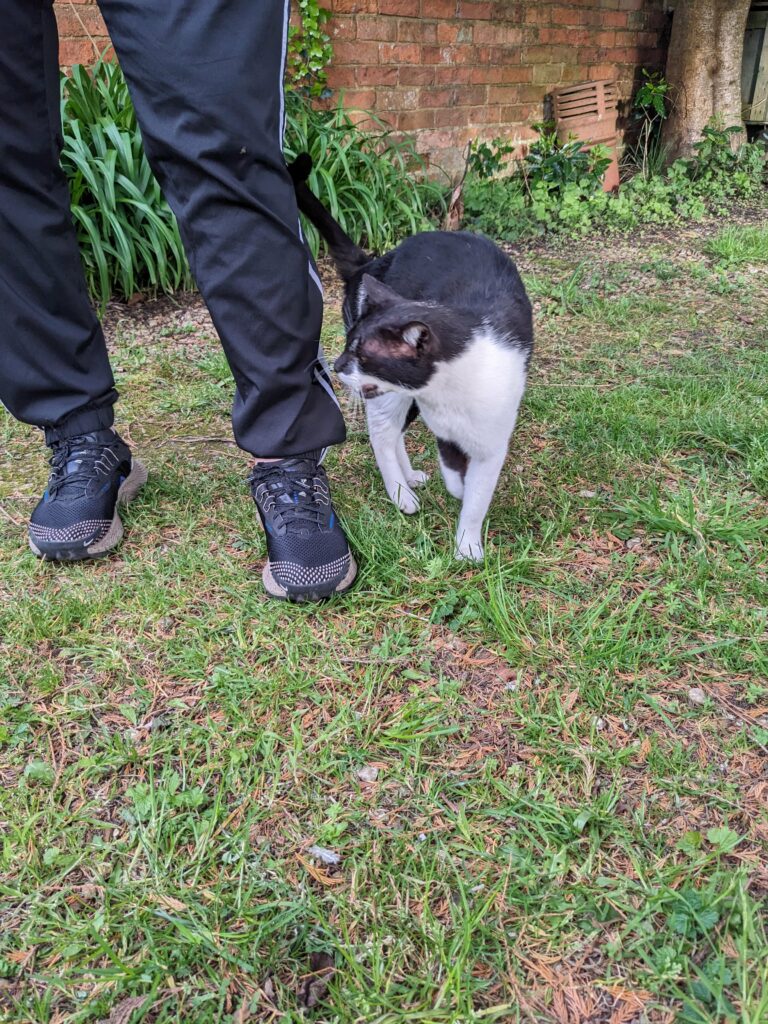
Local menace Tinky come to tell us what’s what - Hungry gapples
The apple store is empty! It’s the end of March, just before Easter so we’re in the tail end of Lent (from the Old English ‘lencten’ meaning ‘when the days lengthen’ i.e. spring), and I took the last two apples out of the store in the gatehouse. This is the time of year known as the Hungry Gap (which may explain why Lent is in this season – make a virtue of a necessity), as the stored food runs low and there’s not much in season yet. Well, there are plenty of nettles, and I imagine the early medieval people would have cooked and eaten them along with other spring greens. Protein from eggs? But not so much bulk food, unless you had a good harvest and good fortune storing it.
Quite a lot of the apples weren’t eatable, as the flesh turned brown, or bruises spread across the entire fruit. But the bottom couple of drawers seem to have fared better, with the apple flesh still white and crisp. Maybe it was that bit cooler?
The bulk of last year’s apples were Bramleys, which ripen up into a very pleasant eating apple in defiance of the supermarket practice of only selling them green (and huge!). My Bramleys varied between VAST MONSTERS and cute little things.
This year I hope we’ll get more of the other varieties, just for, well, variety, and also because some of them may be better keepers – and older varieties, closer to what our Anglo-Saxon nuns would have known.
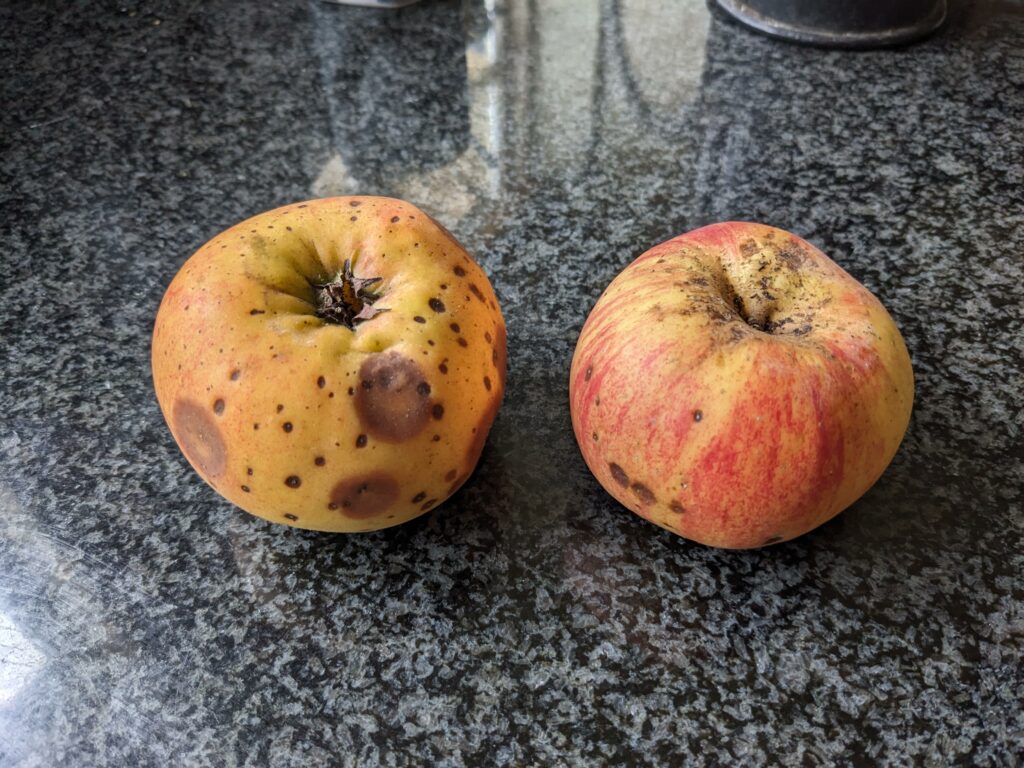
The last two apples: despite appearances, the penultimate apple (left) was good inside. Yes these are Bramleys! 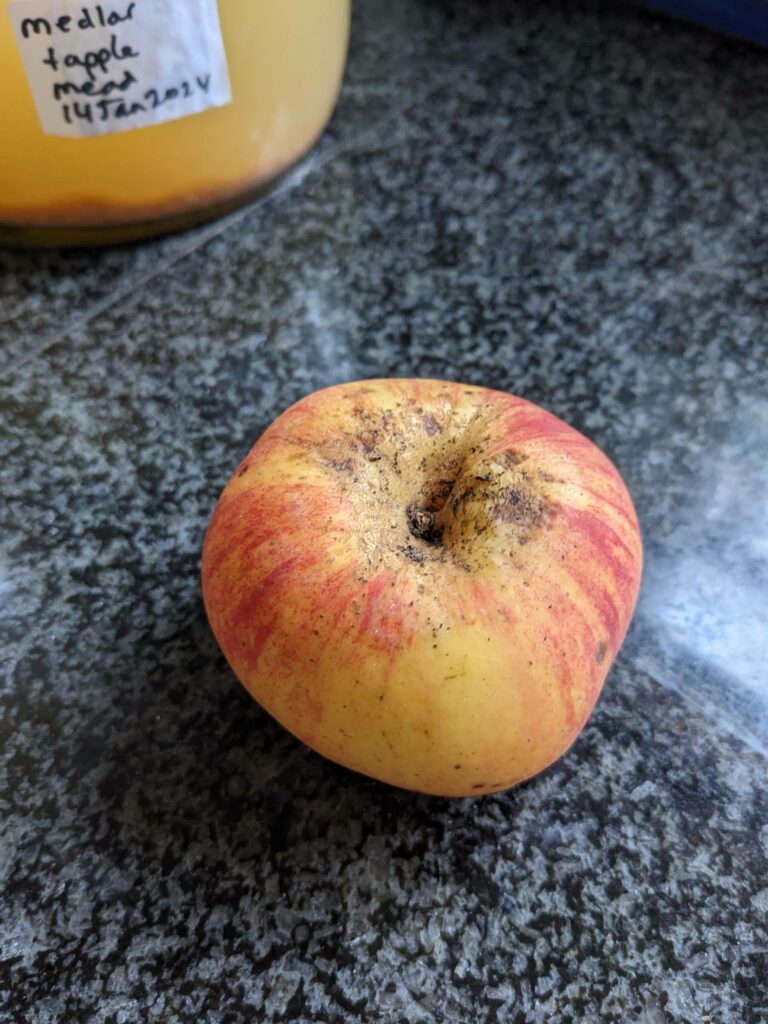
The very last apple! With the medlar and apple mead, which is still blopping away 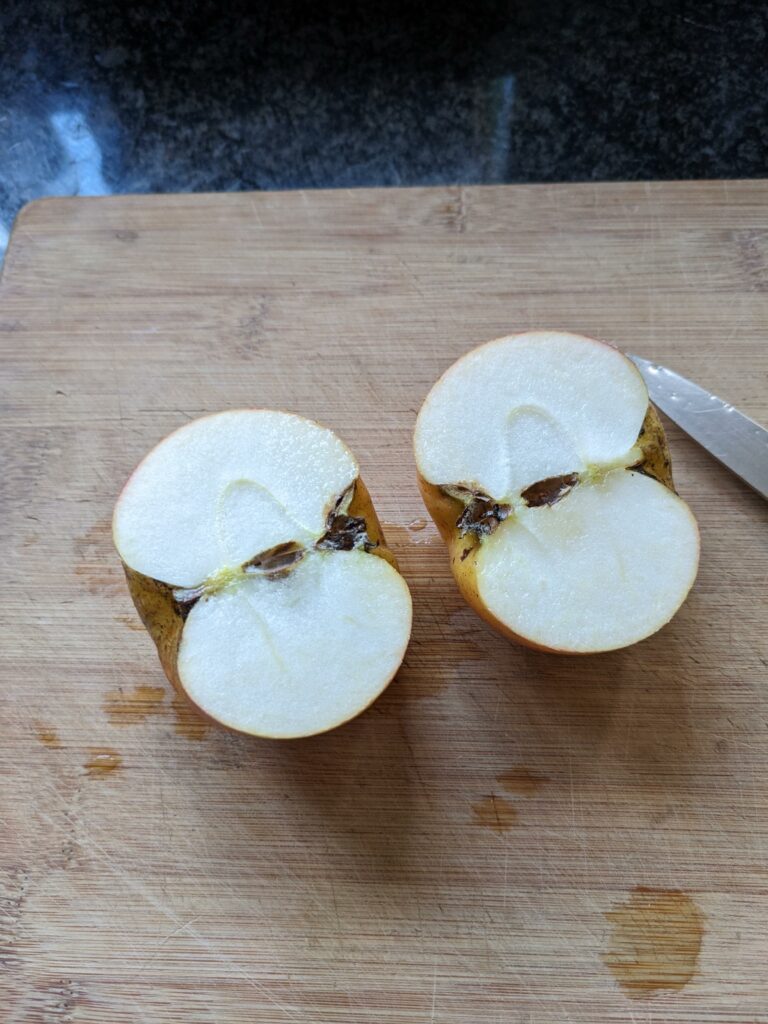
Inside the last apple The final apple was a beaut! Very tasty.
The orchard did well; the apples have kept me going at about 1 per day plus crumbles and apple sauce, since 1 August 2023 to 26 March 2024. The trees were affected by a late air frost, or something, and didn’t produce at their maximum, though the Bramley did pretty darn well. Some of my friends reported having no harvest at all last year, so Rumwoldstow was luckier than many.
What we didn’t get was pears; the older two (planted in 2018) flowered and set fruit, but dropped them all. When they were pruned, it transpired that they must have not been planted properly because there was a pot-shaped block of earth with the tree coming out of it, which wobbled alarmingly. Our pruner, Michael, suggested that the trees dropped their fruit because they didn’t feel stable enough to carry them, and also that perhaps because the ground is so wet, they hadn’t felt it necessary to send roots out searching for water. Al and Michael staked them up to be more stable, also the quince was a bit sideways so they staked that too. Fingers crossed this will help them. The two apple trees (Wyken Pippin and Hambledon Deux Ans) look fine; they may have been planted from bare roots? It shows the importance of spreading the roots from a pot-bound tree when planting it out. I’ll have to bear this in mind when the seedlings are being set loose on the world, wherever and whenever that ends up being.
The pear trees are in blossom, as are the plum and damsons. The apples are just starting to bud.
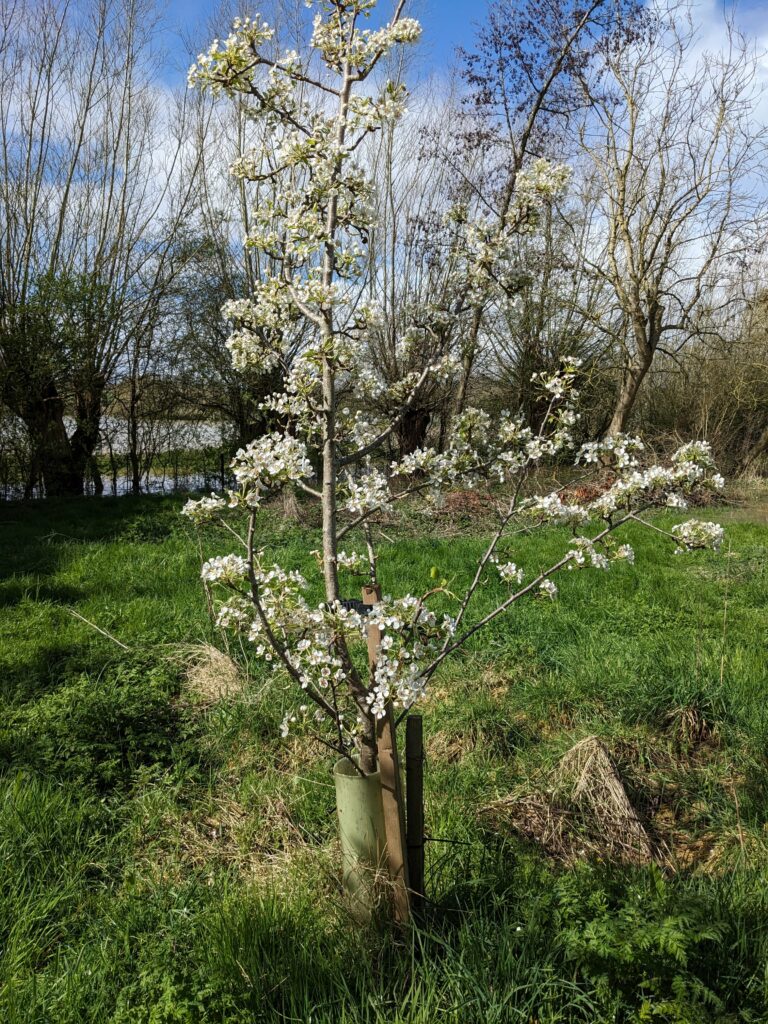
Pear: Louis Bonne of Jersey 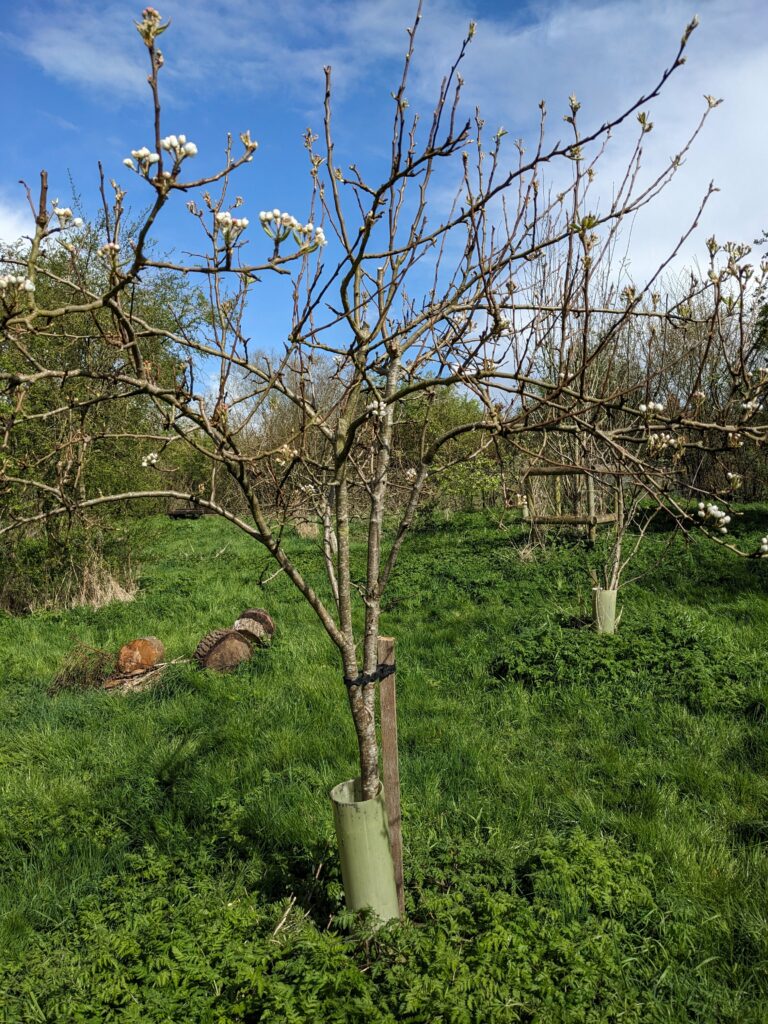
Pear: Uvedale St Germain 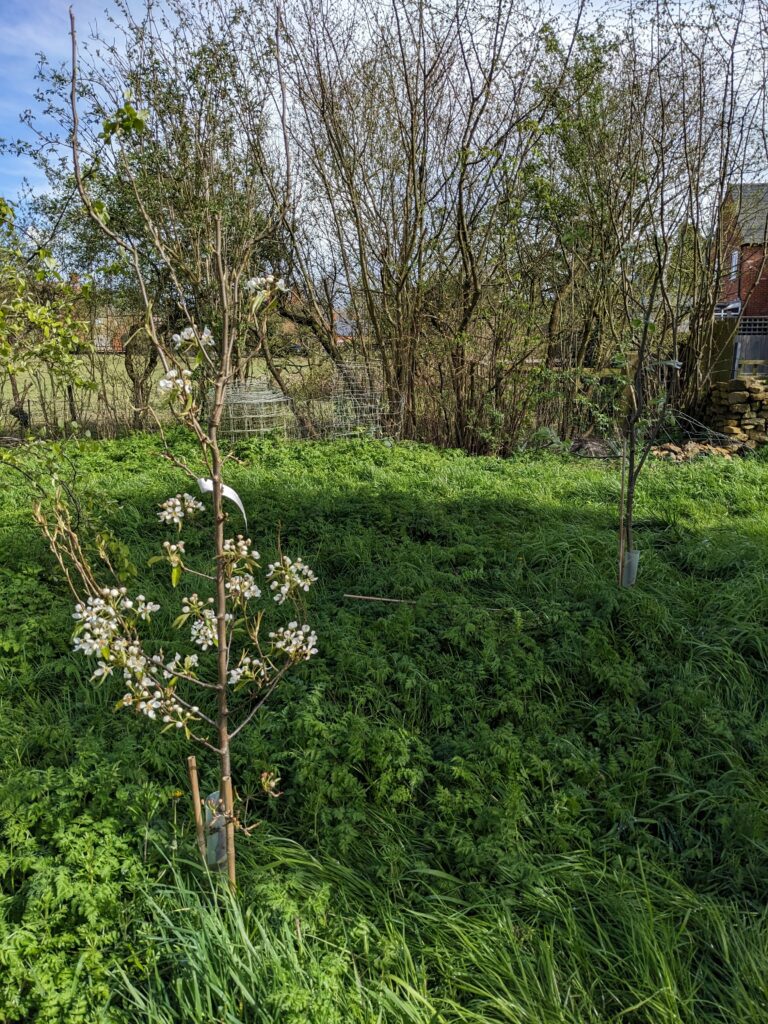
Pears: Winter Nelis (left), Jargonelle (right) 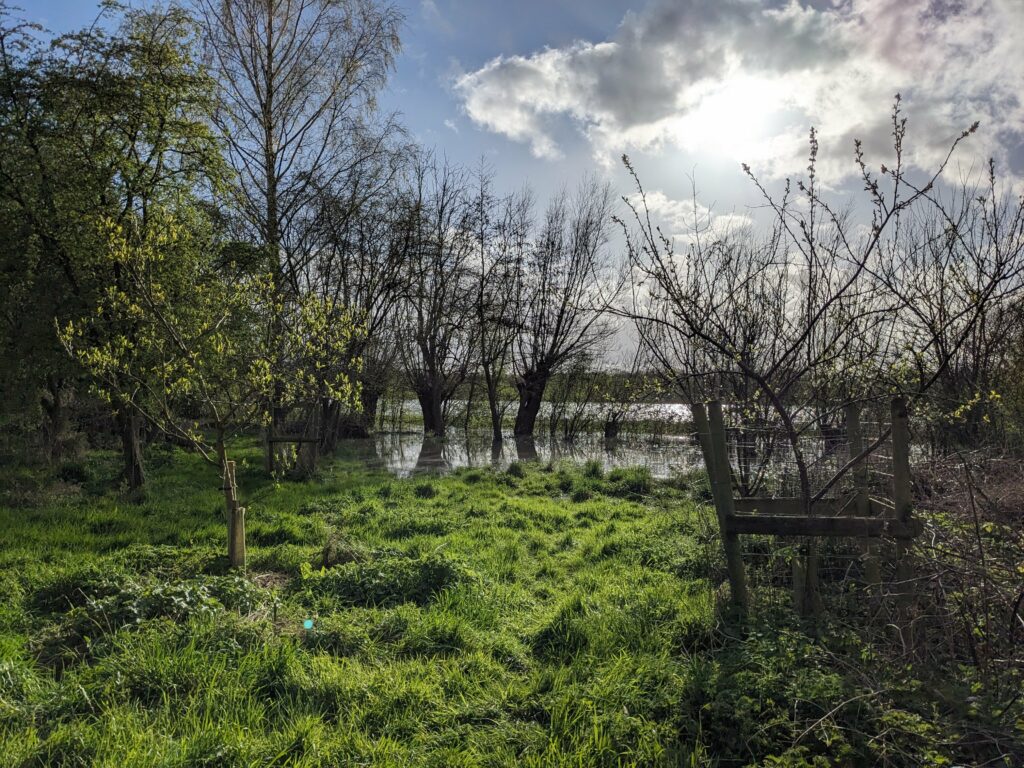
Floodwaters rising again after torrents of rain yesterday. Medlar (left) and plum (right, Rivers Early Prolific) So yeah, a very strong sense of ending and renewal.